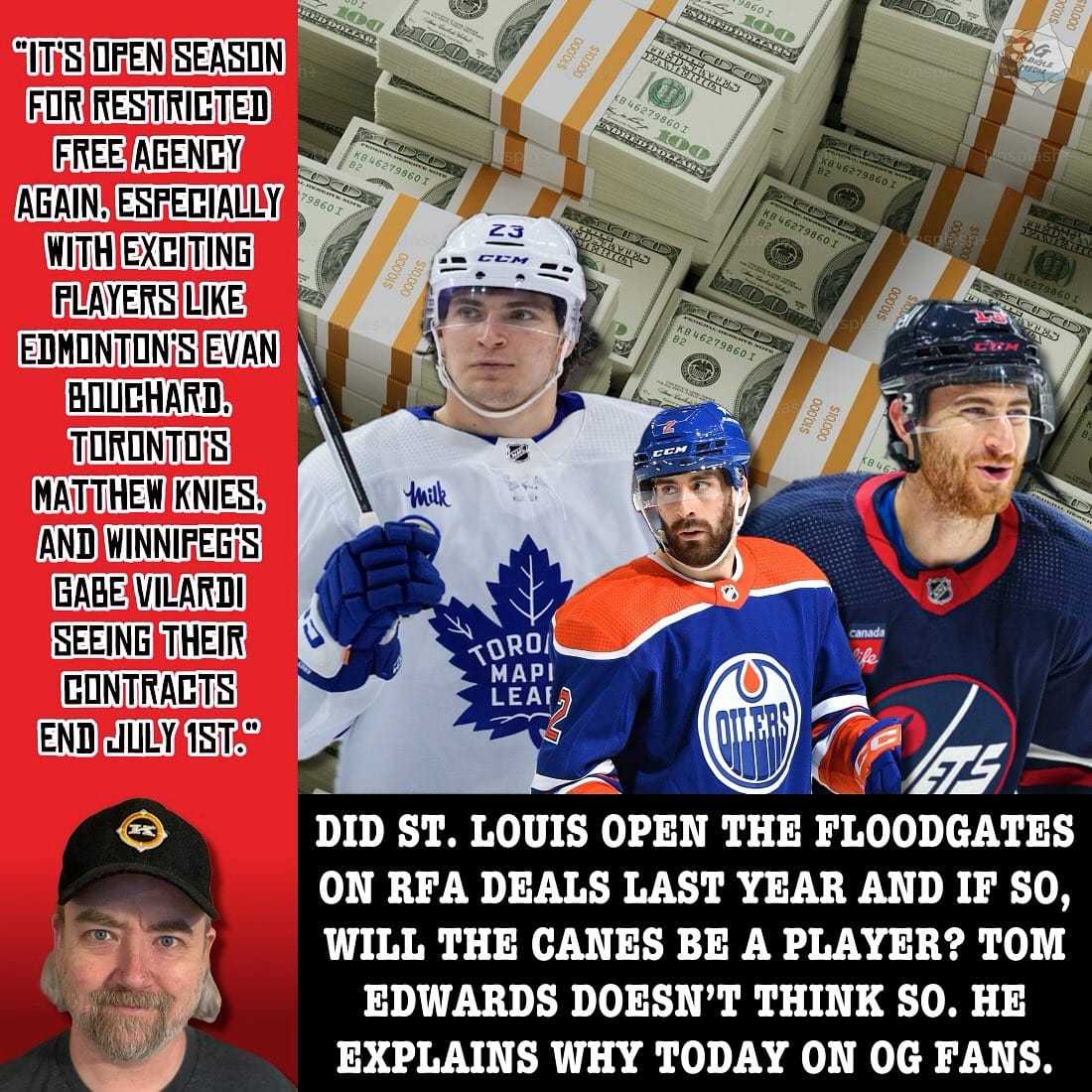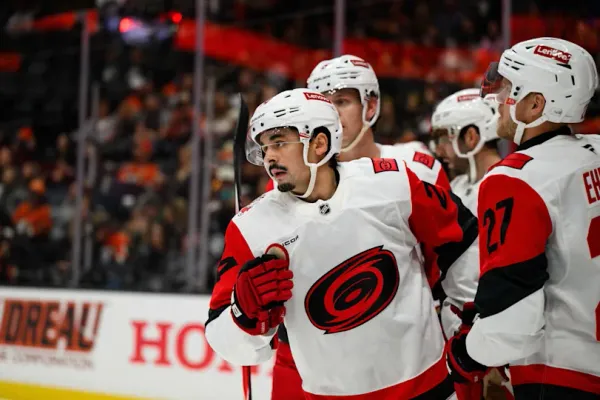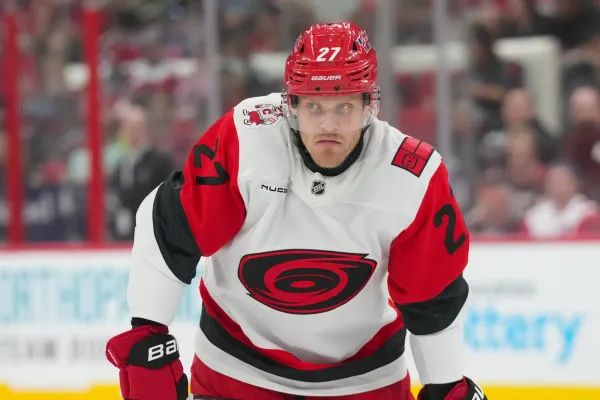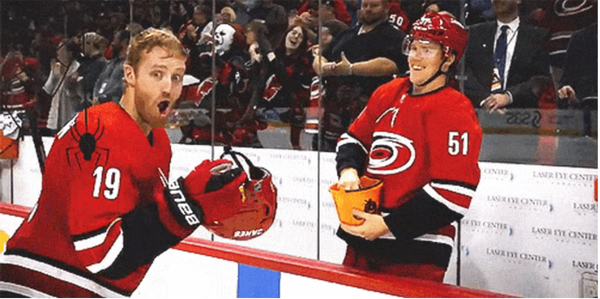OG Fans - June 11, 2025
There are some good RFAs out there, but it'll be real hard for the Canes to get them.

It’s easy to get antsy this time of year, waiting for July 1st to see not only what the Hurricanes do, but just to see where the rest of the players end up. The hearty increase of the salary cap ($7.5 million!) and the promise of more space to come ($8.5 million more in 2026-27, and another $8.5 million more in 2027-28) means a lot of money and bad contracts are going to come out of this and if teams aren’t smart, they’re going to be paying for mistakes for several years down the line.
OK, but we knew that already. Stupid spending has been going on in free agency since the dawn of time, but there’s a different path to acquiring players that has more come to light in recent years, although if you’re a Canes fan reading this, you’re already more than likely a little familiar with restricted free agency. For those of you new to the scene (or who maybe didn’t fully understand what was going on), a quick recap:
- From 2013 to the 2019 offseason, only one player (Ryan O’Reilly in February of 2013, in the middle of a holdout) had signed an offer sheet (contract offered to another team’s restricted free agent). Hockey seemed to have a gentleman’s agreement (READ: collusion) that teams would not use offer sheets on restricted free agents.
- On July 1st, 2019, restricted free agent Sebastian Aho signed a five-year, $42.3 million offer sheet with the Montreal Canadiens. The deal had a yearly cap hit of $8,460,250, but almost entirely out of signing bonuses, and structured as front-heavy as they could. Canadiens management believed Canes owner Tom Dundon either didn’t have (or wouldn’t be willing to spend) $11.3 million immediately on matching the offer sheet and another $9.87 million lump sum payment one year later.
- Dundon and the Canes matched the offer sheet, but waited a few days to do so, just to be dicks.
- Two years later, the Hurricanes signed Montreal restricted free agent forward Jesperi Kotkaniemi to a 1-year deal worth $6,100,035, with a signing bonus of $20, with “20” being Sebastian Aho’s number. The Canadiens did not match, and received a first-round and third-round pick from Carolina.
Since then, it seemed like the offer sheet saga was done again, until last offseason, when the St. Louis Blues signed two Edmonton Oiler players, defenseman Philip Broberg and forward Dylan Holloway, to offer sheets. The Oilers, who were struggling with cap room, elected not to match. So, you might say that it’s open season for restricted free agency again, especially with exciting players like Edmonton’s Evan Bouchard, Toronto’s Matthew Knies, and Winnipeg’s Gabe Vilardi seeing their contracts end July 1st. Could the Hurricanes use restricted free agency to pick up a top six forward or top pairing defenseman for only a handful of draft picks?
Sorry to burst your bubble, but not bloody likely, and here’s why.
In order to use an offer sheet on a restricted free agent, the Hurricanes need to have the required draft picks available in case the offer is not matched. I won’t get too much into the weeds with the tiers, but you can read about them over at PuckPedia. The hiccup there is that the draft picks must be the Hurricanes original picks, and not a pick acquired from another team. Most of the tiers require a 2026 3rd round pick, which the Hurricanes traded away to Arizona at the 2023 trade deadline to acquire Shayne Gostisbehere. The Canes could probably get that back pretty easily from Utah if they sweetened the deal a little bit – St. Louis did this last season to get their original 2nd round pick back from Pittsburgh, sending them Ottawa’s 2025 3rd (since they needed their own) and a 2026 2nd round pick to get their 2025 2nd back and a 2026 5th. That second round pick ended up being the compensation for signing RFA Philip Broberg, while the 3rd was compensation for Dylan Holloway.
Making things more difficult though is managing an offer that is high enough to make a team not match, but not too high that you’re sending all your future draft capital away. AFP Analytics projects Bouchard at $10,887,000 a year for eight years, which might be a little high but not unbelievable. If the Canes offered that kind of annual value in a contract and Edmonton chose not to match, the Canes would give up two first round picks, a second round pick in 2026, and a third round pick in 2026 as well. Knies has a projected yearly cap hit for a long term extension of $7,222,983, which would cost a first, second, and third round pick in 2026, while Vilardi at a projected $6,820,160 would only cost a 2026 first and third.
The real kicker though is a little quirk that a lot of people thinking about signing RFAs seem to miss. To compute the AAV (average annual value) of a player’s offer sheet to determine the compensation, you’d think they would just use simple math – total cost of contract divided by number of years. That’s true for salary cap reasons, but not for offer sheet compensation. To compute that, you take the total value of the contract and divide it by the number of years OR five, whichever is lower. So, let’s say the Canes really like Matthew Knies (which to be fair, there’s a lot to like there), and they offer him a seven-year contract worth $59.5 million, for an AAV of $8.5 million. At first thought, an offer sheet with an AAV of $8.5 million would cost the Canes a first, second, and third round pick. Fine.
But, since we’re dealing with offer sheets, you divide that total contract by five, not by the seven years the contract actually is. For purpose of the cap, it’s still an $8.5 million AAV, but for compensation purposes it’s $11.9 million AAV ($59.5 million/5), which pushes the compensation to its highest tier, meaning the Hurricanes would have to give up four first round picks. Matthew Knies is cool and all, but I don’t think he’s worth four firsts. This is why Montreal’s offer sheet to Sebastian Aho was only for five years – any more than that and the compensation would have shot up. Much like the Knies example, the Canadiens were willing to give up a first, second, and third round pick, but if they added two years to that deal, they would have had to give up four firsts.
Eric Tulsky and his team will surely explore the restricted free agent market and try to see if any moves make sense. If the Canes are to make a move, expect it to be smaller, akin to what St. Louis did last season. Either way, watch the transaction wire close – if the Canes suddenly make a deal to get their 2026 third rounder from Utah, something’s cooking.




